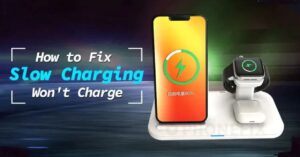Advanced Android Debugging Tips for Power Users

Android Debugging Tips
For many Android users, smartphones just work — apps run, notifications arrive, and systems hum along as expected. But for power users and developers, the real magic lies under the hood. Android is an open platform filled with tools and tricks for diagnosing, analyzing, and optimizing everything from app performance to network behavior.
This guide provides advanced Android debugging tips specifically for power users — those who want deeper insights, more control, and the ability to fix or enhance their devices. Whether you’re testing a custom ROM, analyzing app crashes, or profiling memory usage, these tips will help you go beyond the basics.
How to Install Custom ROMs (and Why You Might Want To)
Why Android Debugging Matters for Power Users
Debugging isn’t just for developers. Power users benefit from mastering Android debugging tips because it allows them to:
- Fix performance issues or bugs
- Customize and tweak the system behavior
- Understand how apps and services behave in real time
- Extend battery life and system longevity
- Enhance privacy and security
With the right set of tools and commands, Android debugging becomes a powerful toolkit to unlock the full potential of your device.
Getting Started: What You Need
Before jumping into these Android debugging tips, make sure you’re ready with the essential tools.
✅ Enable Developer Options
- Go to Settings > About Phone
- Tap Build Number seven times to unlock Developer Options
✅ Turn on USB Debugging
In Developer Options, enable USB Debugging to allow your computer to interface with your device through ADB.
✅ Install ADB and Fastboot
Download the Android SDK Platform Tools to access ADB (Android Debug Bridge) and Fastboot commands from your terminal or command prompt.
✅ Optional: Root Access
While not required for all Android debugging tips, having root access gives you more flexibility and visibility into the Android system, especially for advanced performance tweaks.
1. ADB: Your Command-Line Ally
ADB is the cornerstone of almost all Android debugging tips. It allows you to connect to your phone from a PC, access logs, install apps, and control many aspects of your system.
Basic ADB Commands
- Check device connection
adb devices - Enter shell access
adb shell - Push and pull files
adb push <local> <remote> adb pull <remote> <local>
Monitor Live Logs with Logcat
adb logcat
This command displays real-time logs from apps and the system. One of the most important Android debugging tips is learning to filter log output by severity or tag.
adb logcat -s MyAppTag:D *:S
2. Deep Dive into Logcat for App and System Debugging
Among the most essential Android debugging tips is mastering logcat. Logcat lets you observe:
- Crashes (
FATAL EXCEPTION) - App errors
- Warning messages
- Garbage collection behavior
- Network activity
Export Logs to File
adb logcat -d > crash_logs.txt
Filter by Process ID or Tag
adb logcat --pid=<pid>
Use this when debugging a specific app to reduce noise from other services.
3. Using dumpsys for Internal System Data
The dumpsys tool is a goldmine for advanced users. It provides internal data directly from system services.
Battery Stats
adb shell dumpsys batterystats
This command offers insight into battery drain sources — one of the most useful Android debugging tips for power efficiency.
CPU and Memory Usage
adb shell top -n 1
adb shell dumpsys meminfo
App Performance Debugging
adb shell dumpsys gfxinfo com.example.app
This displays frame rendering times, helpful for detecting UI lag or dropped frames.
4. Debugging via Developer Options
Built into Android’s settings is a suite of tools that many power users overlook. These Android debugging tips inside Developer Options can help identify issues faster.
Show Taps and Pointer Location
Visualize touch input and gestures for testing.
Enable Strict Mode
Flashes the screen if your app performs long operations on the main thread.
Force GPU Rendering
Determine whether GPU acceleration improves or harms your app’s performance.
Profile GPU Rendering
Enable the frame render time bars. This is critical for performance tuning apps and custom launchers.
5. Wireless ADB for Cord-Free Debugging
One of the best modern Android debugging tips is using ADB wirelessly.
Connect via Wi-Fi:
- Connect your phone via USB and run:
adb tcpip 5555 - Disconnect USB and connect over IP:
adb connect <device_ip>:5555
Now you can debug freely without cables — especially helpful when testing sensors or apps that require physical movement.
6. Debugging Network Activity
Power users often need to debug slow connections, broken APIs, or rogue apps. Here are network-based Android debugging tips to monitor your device’s traffic:
Check Open Connections
adb shell netstat
Use a Proxy for Traffic Analysis
Set your device to route all traffic through tools like:
- Charles Proxy
- Fiddler
- Burp Suite
This allows you to inspect headers, cookies, and API requests — a must-have for app developers and privacy-focused users.
7. Debugging Memory Leaks and Resource Usage
When apps slow down or crash unexpectedly, memory issues could be the culprit. These Android debugging tips will help you spot and solve memory-related problems.
Use dumpsys meminfo
adb shell dumpsys meminfo com.example.app
This shows RAM usage, native heap size, and allocation counts.
Take a Heap Dump
In Android Studio or via ADB:
adb shell am dumpheap com.example.app /data/local/tmp/heapdump.hprof
adb pull /data/local/tmp/heapdump.hprof
You can open the file in MAT (Memory Analyzer Tool) to pinpoint memory leaks.
8. Advanced Crash Analysis with Tombstones
Android stores native crash logs (tombstones) in:
/data/tombstones/
Pull them with:
adb pull /data/tombstones/
These logs contain valuable information about low-level crashes — among the more technical but powerful Android debugging tips for experienced users.
9. SELinux Debugging and Permissions (Root Required)
Custom ROMs and rooted devices sometimes experience permission denials due to SELinux.
Check SELinux Logs
adb shell dmesg | grep -i "avc:"
Use these logs to determine which files or services are being blocked, then adjust policies or contexts accordingly.
10. Debugging Custom ROMs and Kernels
Power users running custom ROMs or kernels should know these specialized Android debugging tips:
Boot Logs with Dmesg
adb shell dmesg
This helps identify issues during the boot sequence.
Debug Init Scripts
Add log statements to init.rc files in custom ROMs to track service start behavior.
Monitor Boot Time
adb shell systemctl list-jobs
Helps determine which services are delaying the boot process.
11. Use Termux or Terminal Emulators
For on-device debugging, use apps like Termux to access the shell directly.
top
htop
logcat
Install packages like nano, curl, and git for advanced command-line functionality.
12. Rooted Device Debugging Tips
If your device is rooted, the following Android debugging tips become available:
- Use Magisk Modules like Logcat Reader, BusyBox, or Syslog
- Monitor system calls via
strace - Modify system props using
setprop
Example:
setprop debug.layout true
This overlays visual bounds on UI elements — helpful for layout debugging.
Summary: Why Android Debugging Tips Matter
Mastering Android debugging tips isn’t just for developers — it empowers power users to take control of their devices, solve complex issues, and optimize performance.
From analyzing crash logs and monitoring CPU usage to intercepting network traffic and fine-tuning app performance, Android provides one of the richest debugging ecosystems in mobile.
Final Tips and Best Practices
- Always backup your data before deep debugging or system modifications.
- Use caution with root-level commands — they can harm your device if misused.
- Keep logs organized — save copies for before-and-after comparisons.
- Use official tools like Android Studio for app-level debugging.
- Regularly visit XDA Forums or developer documentation to stay updated.
Resources to Explore Further
With these Android debugging tips, you’re no longer just a user — you’re a system-level troubleshooter, performance tuner, and explorer of Android’s deepest layers.







